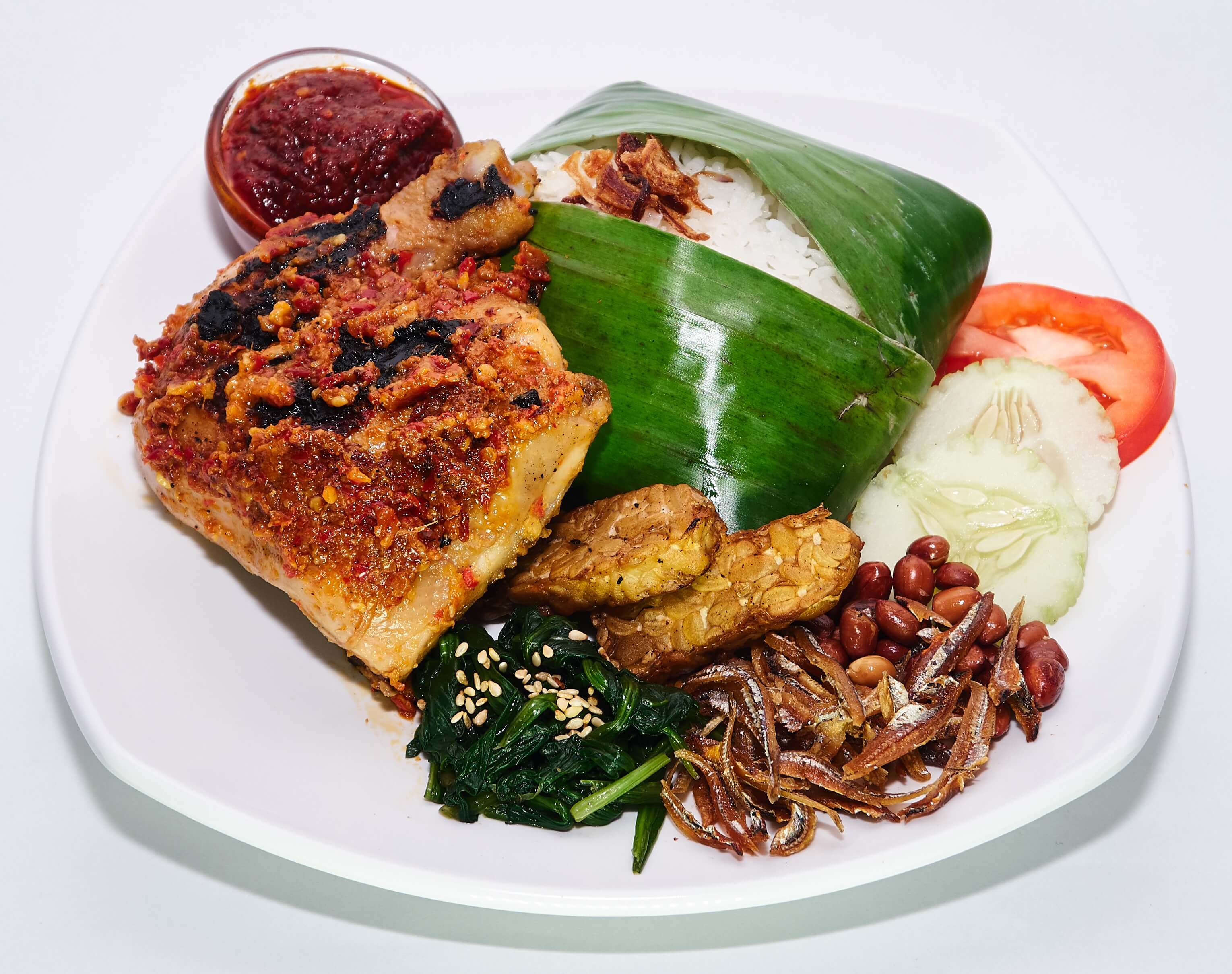How an Indonesian and a Singaporean fell in love and created a dish of cross-cultural flavours.
With two young children, Mohammed Noorman and Puti Andam Dewi Henry are certainly very busy parents.
Their first child is a six-month-old doe-eyed boy. Their second child is a little more unusual: Nasi Lemak Ayam Taliwang, a hawker stall (#01-33) at the Yishun Park Hawker Centre, doesn’t scream or cry for attention – but it is no less demanding than their baby boy.
The parents came from different countries. Puti, 31, was born in Padang, Indonesia. Noorman, 38, is a Singaporean who had grown up helping out at his family’s hawker stalls, which ran for two generations. Puti and Noorman’s paths crossed when they worked as cabin crew in the same airline.
They bonded over food. Noorman enjoys cooking, a passion that he has cultivated since he was six, when he began assisting his aunties and uncles in their cooking. Gradually, he learnt to master quintessentially Malay dishes like kueh and nasi lemak. Meanwhile, Puti has always liked trying out recipes and exploring the different ethnic cuisines in Indonesia’s diverse islands.
Their friendship blossomed into love. They married, and then flew to Lombok, Indonesia, for their honeymoon. There, they tried ayam taliwang, a local grilled chicken dish. It turned out to be a life-changing encounter for them: the taste of ayam taliwang was so memorable that they decided to bring it to Singapore.
“Ayam taliwang is very spicy, and that is what makes it so addictive,” Puti says. “There is a really nice kick in its strong flavours, which are a mix of sweet, spicy and tangy.”
Noorman adds: “Ayam taliwang is actually a humble Indonesian dish that many locals in Lombok enjoy. As we thought about it, we felt that it complements the equally humble Malay nasi lemak, which is well-loved in Singapore.”
They started to experiment with ayam taliwang recipes back at home. The couple recreated the sambal or marinade with different spices and ingredient proportions, and often served ayam taliwang to family and friends during the weekends.
“After testing out numerous versions, we arrived at the right one, where the spiciness is suited to Singaporean taste buds,” Puti says. It took them six months to perfect the recipe, after which they had the confidence to strike out on their own with a hawker stall.
Puti and Noorman make the ayam taliwang marinade by hand. To ensure that it is a robust paste, they use generous amounts of fresh chili, shallots, tamarind juice and belachan. They coat the chicken lavishly with the marinade, steam the meat to seal in the flavours, and then grill it to release the taste and aroma. This is served with fragrant nasi lemak, which is rice cooked in creamy coconut milk.
“When we present the dish, it’s back to basics for us – we use banana leaves in our plating,” Puti says. For the couple, it’s important that the little details and heritage of a dish are not lost amid adaptation and the passage of time.
With both Indonesian and Singaporean roots, Puti and Noorman have also discovered that the region offers many possibilities. “Southeast Asian food is very versatile,” Puti says. “There is room to mix and match different flavours from the region and make them work.”
Noorman says: “As we bring our unique fusion of nasi lemak ayam taliwang to Singapore, our hope is that more Singaporeans will be exposed to the rich cultures in Southeast Asia and appreciate our diverse cuisines.”

Monday – Sunday | 6.30am to 9pm